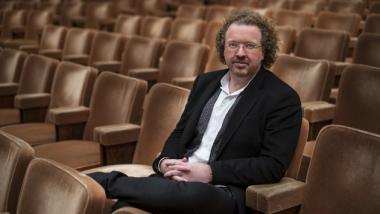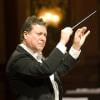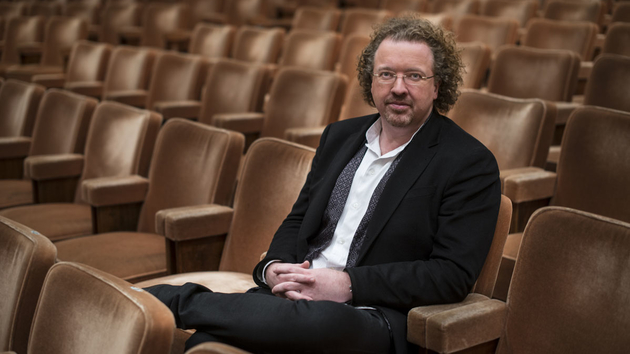
Thursday’s San Francisco Symphony concert was a Franco-Italian travelogue, curated by two French guest performers. Three French composers and one Italian provided the repertoire, much of which contained symphonic portraits of Italy.
Stéphane Denève conducted, proceeding through the concert with greater calmness and less eccentricity than in Rachmaninoff’s Symphonic Dances, which he had filled with abrupt and erratic tempo changes on a visit here three years ago.
The purely French work on the program, the only one with no explicitly Italian content, was the Cello Concerto No. 1 in A Minor by Camille Saint-Saëns, with Gautier Capuçon as soloist. Capuçon gave a firm and mellow tone to this brief, lively, and choppy work that bears a passing resemblance to Édouard Lalo’s concerto of a slightly later date. The one part that doesn’t sound at all like Lalo, or indeed like hardly any other music of the late 19th century, is the courtly minuet that appears as an episode in the middle of the unbroken work. This was played crisply and softly by the orchestral strings, with the solo cello joining them as a wandering visitor during the repetition.
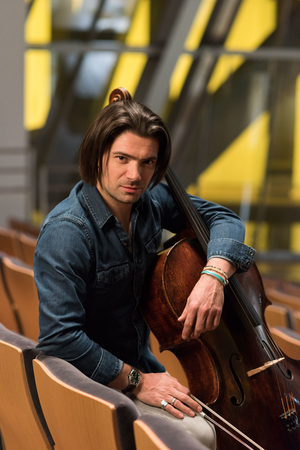
For an encore, Capuçon was accompanied by strings and harp in Saint-Saëns’s noblest cello showpiece, “The Swan” from Carnival of the Animals. This gave a particularly admirable display of the steadiness of his tone.
A purely Italian portrait concluded the evening. Pines of Rome, the second and most famous in Ottorino Respighi’s trilogy depicting scenes around the city, is one of the most reliable barnburners in the repertoire. For the Roman Empire military finale, Denève stationed trumpeters in side balconies and a pair of trombonists in the high back. Carlos Vieu did something similar for Symphony Silicon Valley in March, though I don’t recall having seen such an elaboration in more distant past performances of the work. This was, however, a refined and dignified interpretation where SSV’s was raucous.
From my position at the same level as the brass in the balconies, though from some distance away, their presence was arresting. The weirdly echoing, almost melting effect as the sound waves cascaded around Davies from various directions reminded me of what can make Henry Brant’s spatial music so exciting in this hall.
The remaining two works on the program, the ones depicting Italy by French composers, were more unusual repertoire. Escales (Ports of Call) by Jacques Ibert is a 1922 suite whose three movements depict Mediterranean locales the composer visited on his honeymoon, in Italy (Rome and Palermo), Spain (Valencia), and Tunisia (Tunis and Nefta). The idiom, in its instrumentation and slightly seasick harmonies, is decidedly like Debussy, though Debussy never wrote anything as exotic as Ibert’s Tunisia. That movement’s echo of Gustav Holst’s Beni Mora is surely coincidental; Ibert probably heard the same kind of North African music that Holst did and responded similarly.
Guillaume Connesson is a 48-year-old French composer who, in 2015, wrote his depiction of the Italian landscape, which was the last ingredient of the concert. The work’s Italian title, E chiaro nella valle il fiume appare, is translatable as “the river is clear in the valley.” This ten-minute piece shocked by how unshocking it was. The music is quiet, contemplative, lyrical, expansive, and well-knit together. The harmonic idiom is consonant with touches of chromaticism.
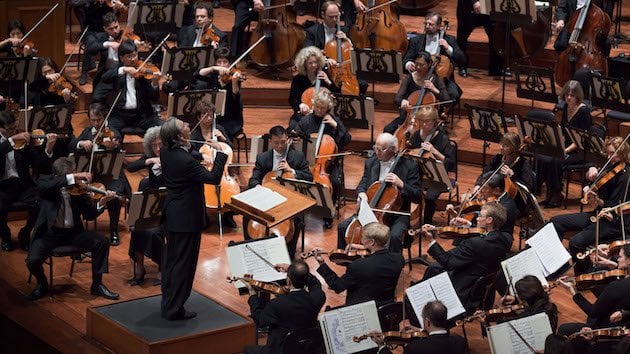
I was struck by the contrast with another new work, Charles Wuorinen’s Sudden Changes, conducted here by Michael Tilson Thomas two months ago. Many composers still promote unapologetic high modernism, but few write so much like an unreconstructed bristling 1960s post-tonalist as does Wuorinen. Connesson conveys almost that degree of preservation of an earlier and strongly contrasting 20th century style. Only a few odd harmonies betrayed for certain that the piece was not written nearly a century ago. Connesson’s music seemed to be a combination of neoromanticism in the sincerity and breadth of his melodies, especially the opening theme in unharmonized doublings, and neoclassicism in its emotional detachment and lack of the indulgence so common in recent concert music written to be popular.
MTT, introducing the Wuorinen in the performance I heard, said that, in a world full of compromising music, it’s a pleasure to have some music that’s completely uncompromising. What could he mean, other than to suggest that bristling post-tonalism is the only uncompromising music? I found Connesson’s piece pleasant rather than compelling, but if lyrical consonance is the language that speaks what Connesson sincerely has to say, and he’s not faking or indulging it, he should be respected for his integrity as much as any contrasting composer is.

